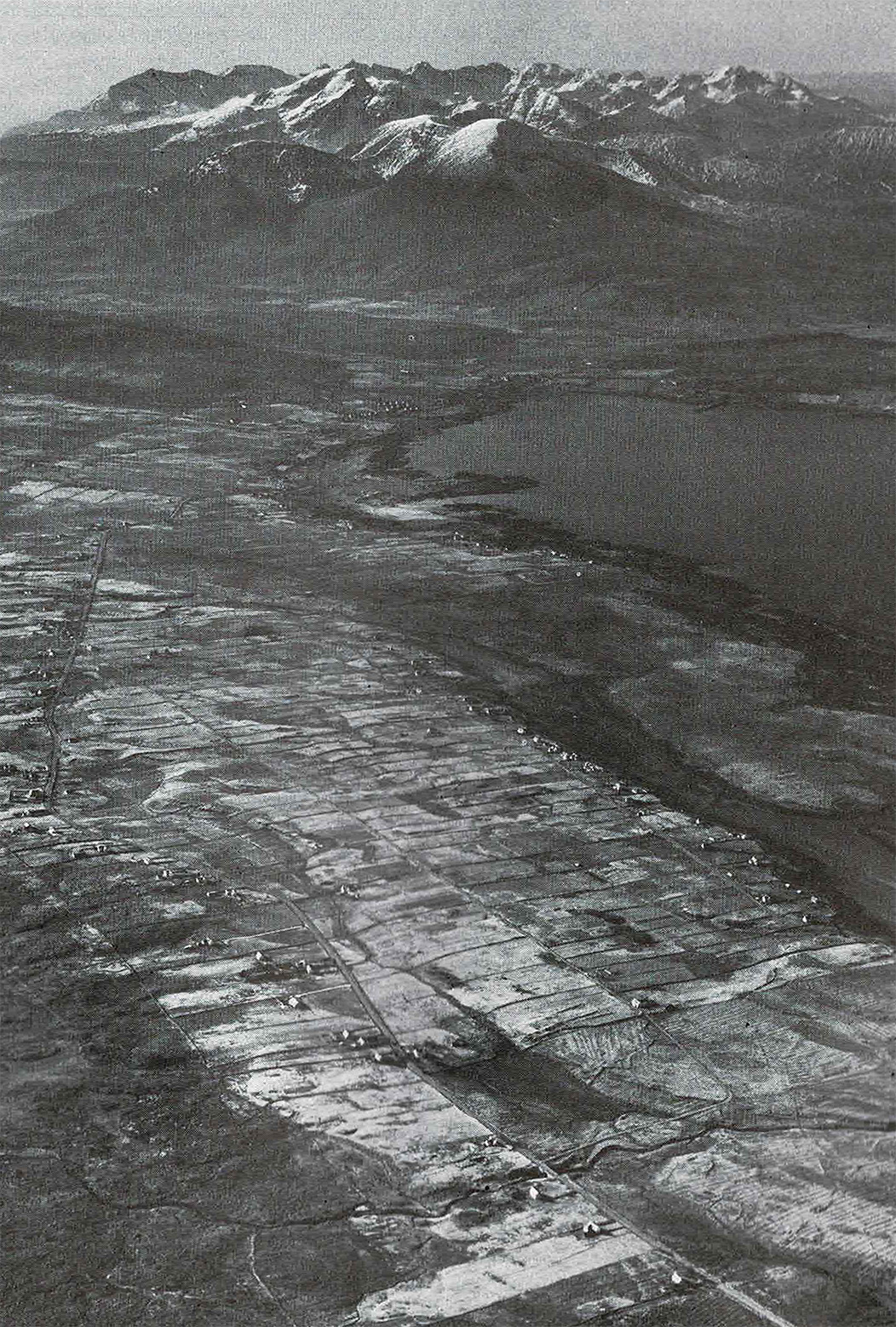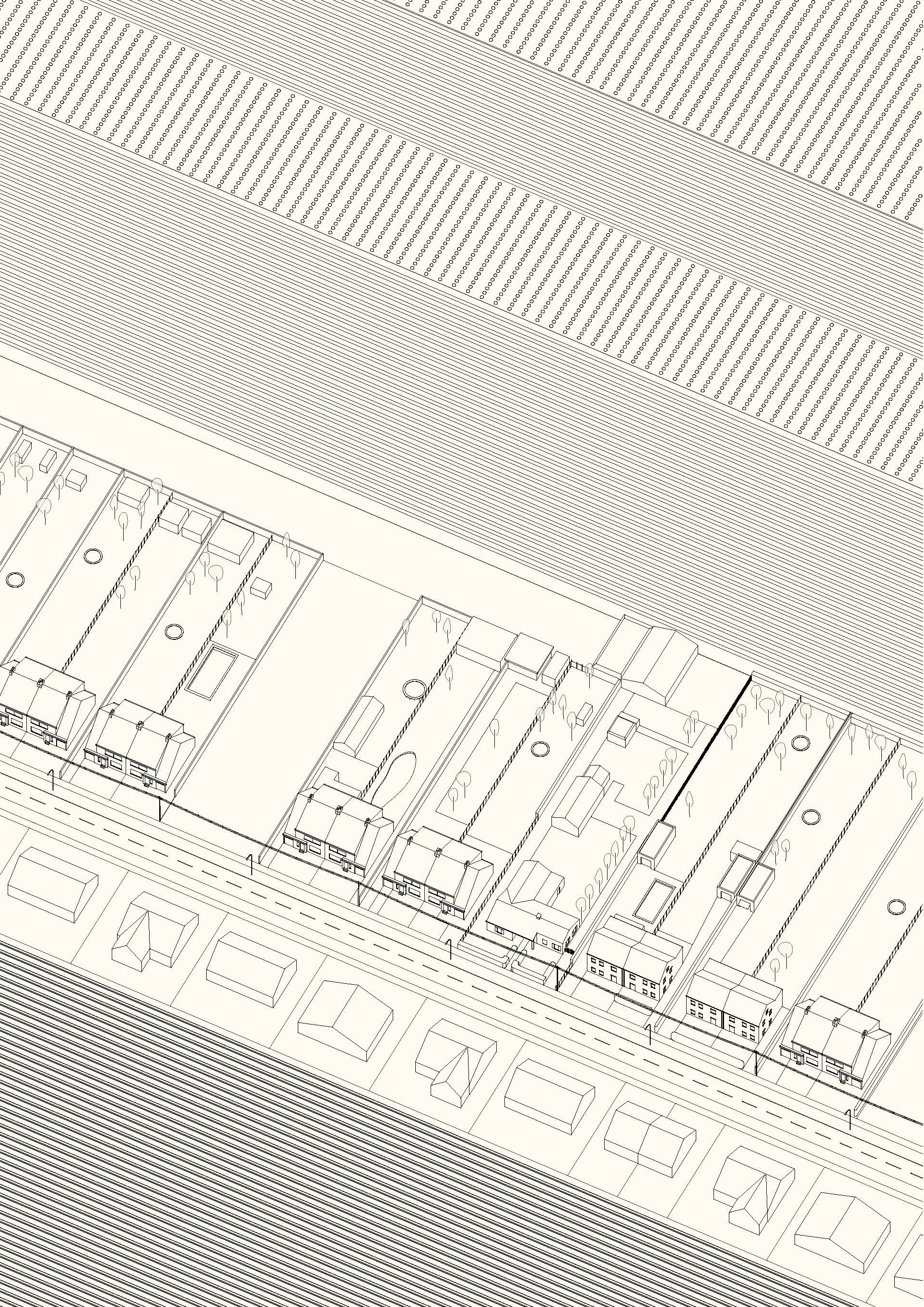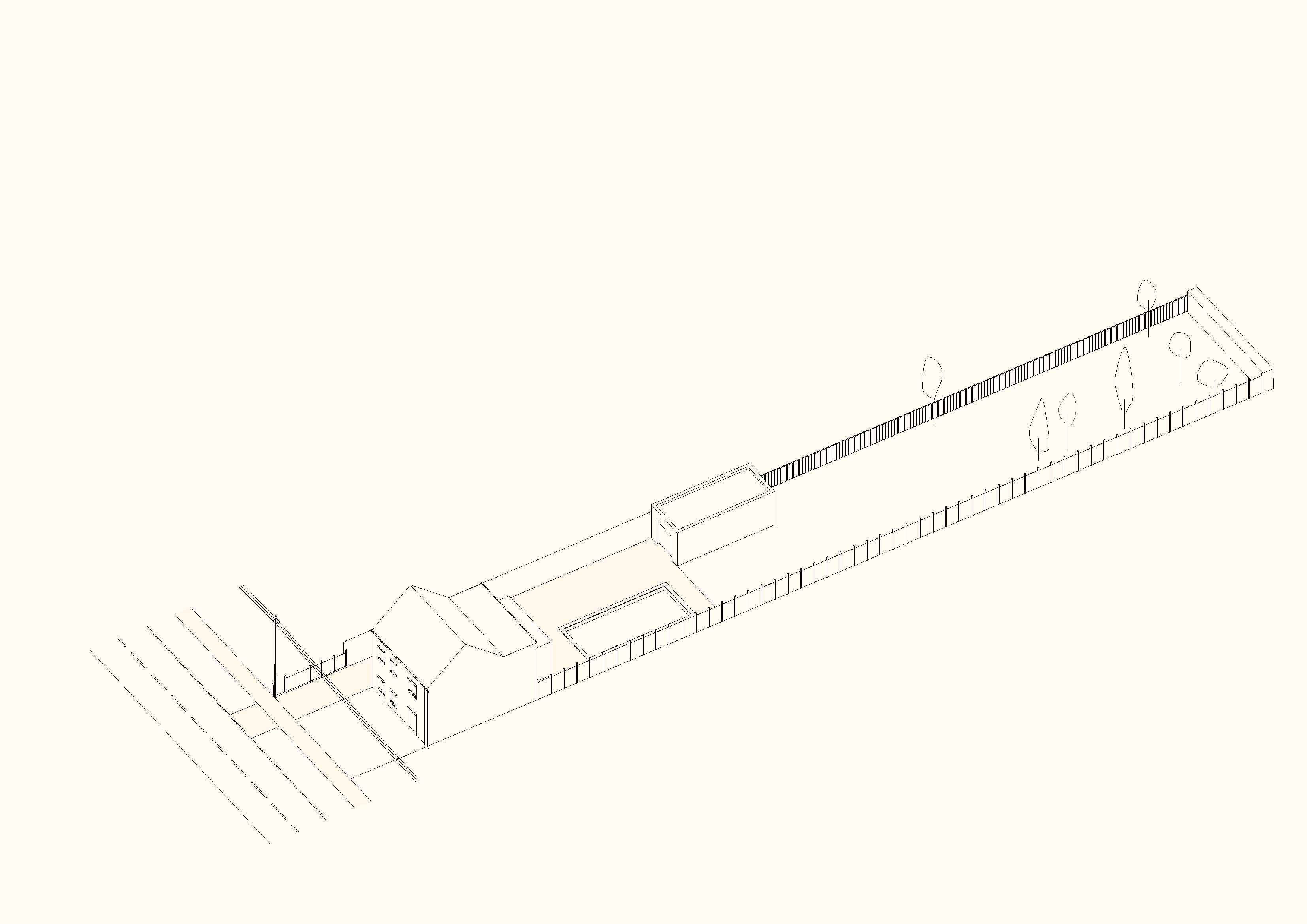




Long, thin plots of land extend from the straight main road in Flanders, allowing for agrarian activities to develop behind. This is a common condition found in the Belgian countryside. The flat nature of the land offers no resistance to building and development, so it is the perfect breeding ground for urban sprawl, resulting in the ribbon developments we see today.
This multiplicity of private utopias provides large gardens to become a domesticated extension of the home. These spaces facilitate the leisure activities that were once hosted by the countryside, which lies just beyond the other side of the fence. In these back gardens, such activities housed include swimming, trampolining, and attending the vegetable patch. The gardens
This multiplicity of private utopias provides large gardens to become a domesticated extension of the home. These spaces facilitate the leisure activities that were once hosted by the countryside, which lies just beyond the other side of the fence. In these back gardens, such activities housed include swimming, trampolining, and attending the vegetable patch. The gardens
have become a tamed version of the wild, highly curated and built in the image of the countryside cottage as a pastiche. The owner builds the house to fulfil the romanticised dream and notion of having a symbiotic relationship with the countryside, which does not exist today. They become the farmer without a farm.
Similar long, thin plots of land can be seen in Scotland, where the Runrig system is a vernacular way of dividing land. This was developed to allow each crofter equal access to resources and was allocated on a rotational basis. There is an interesting comparison to be made between both conditions. Both have been developed for different purposes, and yet the resulting land divisions look remarkably similar.
︎︎︎Image: Robert J Price, Highland landforms.
Similar long, thin plots of land can be seen in Scotland, where the Runrig system is a vernacular way of dividing land. This was developed to allow each crofter equal access to resources and was allocated on a rotational basis. There is an interesting comparison to be made between both conditions. Both have been developed for different purposes, and yet the resulting land divisions look remarkably similar.
︎︎︎Image: Robert J Price, Highland landforms.


